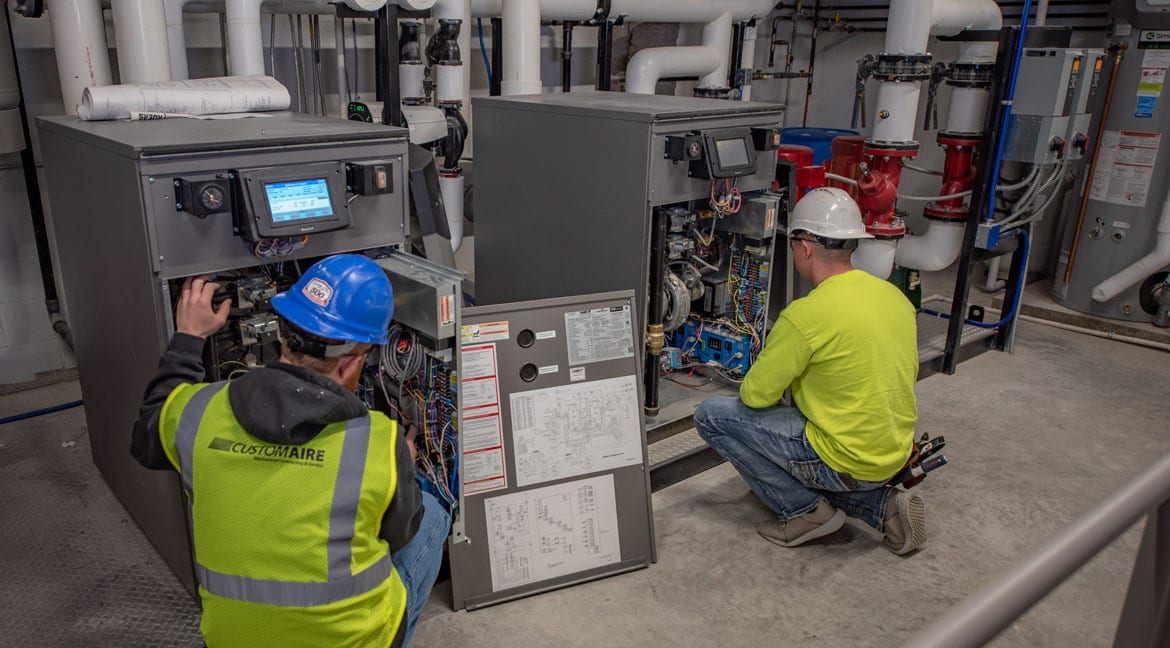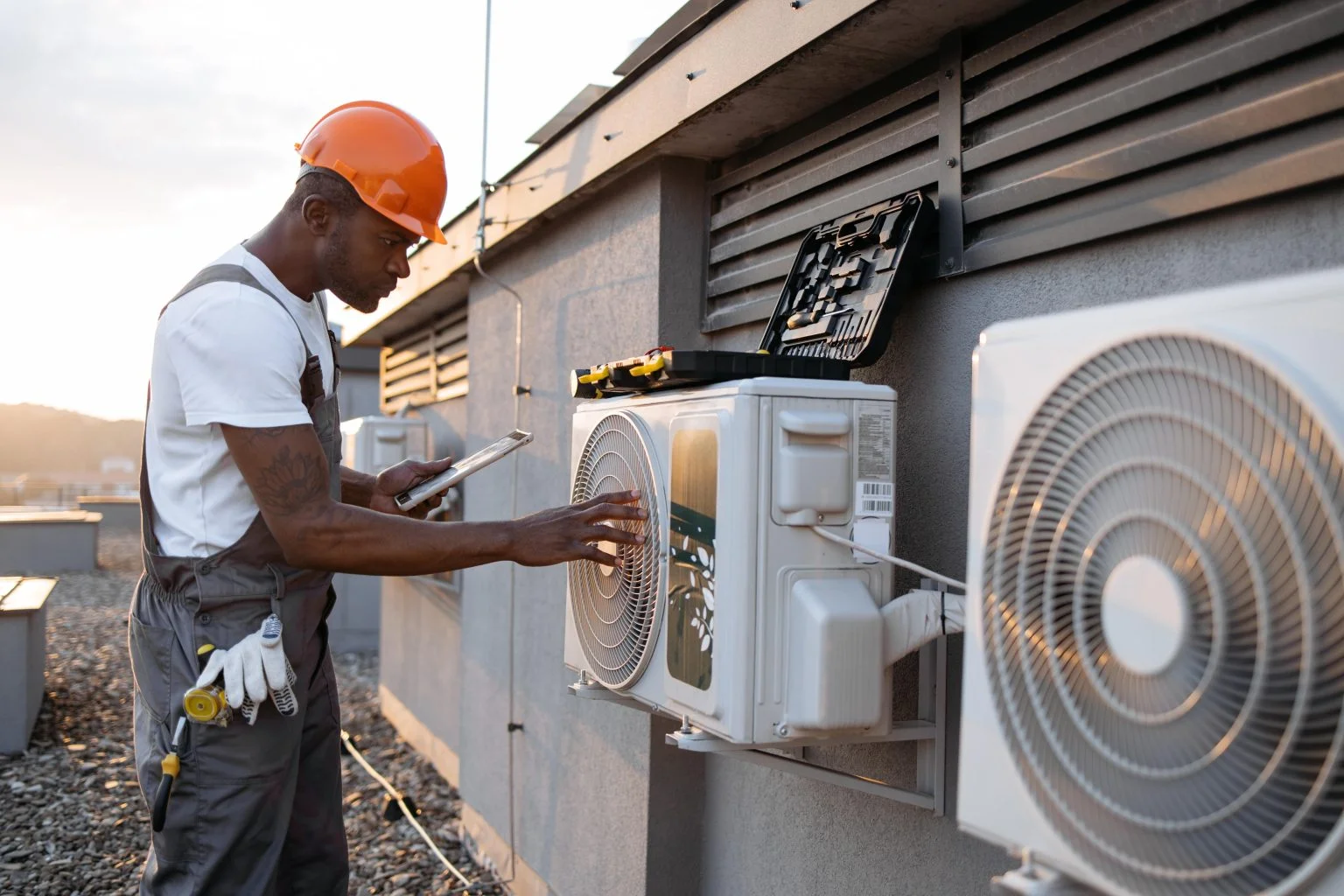Expert Tactics to Improve Indoor Air Quality with ductless mini splits
Expert Tactics to Improve Indoor Air Quality with ductless mini splits
Blog Article
How a Heatpump and Furnace Interact to Enhance Your Home's Home heating Performance
Recognizing just how a heatpump and heating system collaborate is essential for house owners looking for efficient heating services. Each system has its toughness, supplying a well balanced approach to home convenience. The heatpump succeeds in modest temperatures, while the furnace provides rapid warmth during extreme cold. This synergy not only decreases power prices yet additionally improves the life expectancy of both appliances. What aspects influence this collaboration, and just how can property owners optimize their advantages?
Understanding Warmth Pumps: Exactly How They Function
Several people may be unknown with their internal operations, warmth pumps play an important function in contemporary home heating systems. These gadgets operate by moving warm from one area to another, using the principles of thermodynamics. In chillier months, a heatpump essences warmth from the outdoors air, ground, or water, and transfers it inside your home to warm the space. Alternatively, during warmer months, it can reverse the process, serving as an air conditioning system by eliminating warmth from inside to the outside.Heat pumps include an evaporator, condenser, compressor, and growth valve. The cooling agent within the system absorbs heat as it evaporates at reduced temperature levels and stress. The compressor then boosts the pressure and temperature level of the refrigerant, allowing it to release warmth as it condenses. This reliable process can considerably reduce energy intake contrasted to conventional heating methods, making heatpump a sustainable choice for environment control in homes.
The Duty of Furnaces in Home Heating
Furnaces play a necessary role in home heating by giving a trusted resource of warmth during the chillier months. They operate by generating heat with combustion or electric resistance, distributing it throughout the home by means of ducts or glowing systems. The effectiveness of a heating system is typically gauged by its Yearly Gas Use Effectiveness (AFUE) score, which suggests just how successfully the system transforms fuel into heat.Furnaces can use different energy resources, consisting of gas, gas, oil, or power, allowing home owners to pick the most appropriate choice for their demands. Unlike heatpump, which may struggle in extreme chilly, heaters preserve regular efficiency, ensuring that interior temperatures remain comfortable despite exterior problems. Furthermore, contemporary heating systems commonly come furnished with advanced innovation, such as clever thermostats and variable-speed blowers, enhancing their efficiency and responsiveness. This adaptability makes heaters a vital part in all-encompassing home heating techniques.

Advantages of Making Use Of Both Systems With Each Other
Combining the staminas of both heating systems and warm pumps can result in an extra efficient and effective home heating remedy. Making use of both systems allows homeowners to capitalize on the heatpump's energy efficiency during milder temperatures while depending on the furnace for even more extreme cold conditions. This twin approach can greatly decrease power expenses, as heatpump eat less electricity than standard home heating approaches when temperature levels are moderate.Additionally, utilizing both systems with each other can improve convenience degrees in the home. Warmth pumps can give constant, even heating, while heaters can promptly increase ambient temperatures when needed. In addition, the assimilation of both systems can prolong the lifespan of devices by reducing deterioration on each system, as they share the work. Inevitably, homeowners can delight in a well balanced, affordable heating remedy that changes seamlessly to differing weather, ensuring a cozy and welcoming home throughout the wintertime months.
How Warmth Pumps and Furnaces Complement Each Other
When house owners integrate heat pumps and heating systems, they create a complementary furnace that optimizes efficiency and convenience. Heatpump operate by moving warmth from the outside air or ground, making them extremely efficient in modest environments. They succeed during milder temperatures, providing affordable heating. Alternatively, heating systems produce warmth via burning or electrical resistance, providing strong, instant heat throughout severe chilly conditions.The combination of these 2 systems permits vibrant modifications based on temperature level changes. During warmer months or milder winter season days, the heatpump can take the lead, preserving energy and minimizing expenses. As temperature levels decrease, the furnace can flawlessly involve, making certain regular warmth throughout the home. This harmony not only enhances energy use however additionally boosts the lifespan of both systems, as each system runs within its perfect efficiency variety. With each other, they produce a well balanced environment that adapts to differing environment needs.
Optimizing Performance: Tips for Homeowners
Home owners can enhance their home heating effectiveness with several practical strategies. Establishing a routine upkeep schedule, incorporating clever thermostat modern technology, and executing reliable insulation and sealing remedies are crucial actions. These steps not only enhance comfort however likewise lower power expenses.
Normal Upkeep Schedule
To ensure maximum home heating effectiveness, developing a normal upkeep timetable is essential for any home. Property owners ought to focus on routine evaluations of both heat pumps and heating systems to identify peak performance. This consists of changing air filters each to three months, as blocked filters can considerably decrease effectiveness. Furthermore, organizing specialist upkeep at the very least when a year permits specialists to identify and address potential concerns before they intensify. Homeowners must also cleanse the warm pump's exterior system to avoid debris accumulation that can prevent air movement. By adhering to a normal maintenance timetable, property owners not just enhance their heating unit' efficiency yet likewise prolong their life-span, leading to better convenience and decreased energy costs throughout the cooler months.
Smart Thermostat Assimilation
Integrating a wise thermostat into a home heating system can significantly enhance energy efficiency, specifically as it permits specific control over temperature level setups. These tools can discover the homeowner's schedule and choices, immediately adjusting the temperature level to enhance convenience while lessening energy usage. They can decrease heating throughout times when the home is unoccupied, minimizing unnecessary usage. Many smart thermostats likewise supply real-time power usage data, enabling property owners to make informed decisions concerning their heating practices. Additionally, remote accessibility by means of mobile phone apps enables individuals to change settings from anywhere, ensuring the home is warm upon return. Overall, clever thermostat assimilation not just boosts convenience yet considerably adds to power savings and effectiveness.
Insulation and Securing Solutions
Smart thermostats play an important duty in power performance, yet their efficiency can be substantially boosted by correct insulation and sealing options. House owners should focus on protecting walls, floors, and attic rooms to minimize heat loss. High-quality insulation products, such as spray foam or fiberglass, can considerably boost thermal resistance. Furthermore, securing spaces around windows, doors, and ducts avoids chilly air infiltration and warmth retreat. Weatherstripping and caulking are heat pump service reliable approaches for resolving these leaks - furnace replacement. Routine inspections for air leaks, together with the use of blower door tests, can assist identify problem locations. By purchasing insulation and securing, homeowners can enhance the performance of their heater, eventually resulting in decreased energy usage and lower utility expenses
Typical Myths Concerning Warmth Pumps and Furnaces
What false impressions border heatpump and furnaces? Many people mistakenly believe that warm pumps are inefficient in colder environments. Actually, modern-day heatpump are created to operate successfully also in low temperatures, giving trustworthy home heating throughout winter months. An additional usual myth is that heaters are always much more reliable than heatpump. This depends on the details energy sources and performance rankings of the systems in inquiry. Some may also think that utilizing both systems concurrently is unnecessary, but in truth, this combination can optimize heating performance, specifically during extreme weather conditions. Furthermore, people frequently presume that warm pumps call for continuous upkeep, when truthfully, they have comparable upkeep requires see this to conventional heating systems. By exposing these myths, homeowners can make even more educated decisions regarding their home heating choices, eventually leading to boosted convenience and power performance in their homes.
Upkeep Factors To Consider for Combined Solutions

Frequently Asked Concerns
Can Warmth Pumps Job Efficiently in Exceptionally Cold Climates?
Warmth pumps can struggle in incredibly chilly climates due to lowered performance and warm extraction constraints. Nonetheless, improvements in modern technology have brought about models developed for far better efficiency in such problems, enhancing their feasibility in rough environments.
How Much Time Do Warm Pumps and Furnaces Typically Last?
Warmth pumps commonly last 15 to two decades, while furnaces have a life-span of 15 to 30 years. Regular maintenance can expand their durability, ensuring effective procedure and minimizing the need for premature replacements.

What Is the Average Cost of Putting Up Both Systems?
The typical cost of mounting both a heatpump and a heater typically varies in between $5,000 to $10,000 - ductless mini splits. Factors affecting this price include system size, installment complexity, and regional labor prices
Are There Tax Obligation Incentives for Using Energy-Efficient Home Heating Systems?
Many property owners ask about tax motivations for energy-efficient heating unit. Numerous federal and state programs commonly provide discounts or credit scores, encouraging the fostering of lasting technologies to reduce power consumption and advertise ecological obligation.
Just how Do I Select the Right Size Warm Pump and Heater?
Choosing the best size heatpump and furnace includes calculating the home's square video footage, considering insulation high quality, and evaluating regional climate. Consulting a professional can assure suitable system performance and energy efficiency based upon details needs. ductless mini splits. Understanding exactly how a warmth pump and heater job together is important Get More Information for house owners seeking efficient heating services. In cooler months, a warm pump removes heat from the outdoors air, ground, or water, and transfers it inside to heat the living room. When property owners integrate warm pumps and heaters, they develop a complementary home heating system that makes best use of performance and comfort. Warm pumps run by moving warm from the outdoors air or ground, making them extremely efficient in moderate climates. Warm pumps can battle in incredibly cold environments due to minimized effectiveness and warm removal constraints
Report this page